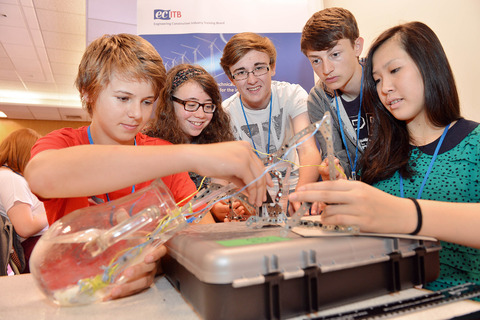Mission inspiration or mission impossible?
3 Nov 2015

Tomorrow’s Engineers Week aims to inspire the next generation of engineers and help bridge the skills gap.
Careers advice at my secondary school was woeful. I’d even go as far as to label it non-existent. However, my school wasn’t unique, and it seems not enough has changed.
Indeed, of the five key facts outlined by the manufacturers’ organisation EEF ahead of this year’s Tomorrow’s Engineers Week, the need for better engineering careers advice resonates most deeply with me.
The fact is, not enough students, particularly female students, want to become engineers - or know they can.
According to the EEF, 60% of firms say better careers advice will encourage more people into engineering.
EEF employment and skills policy adviser Verity O’Keefe said: “It’s critical that we get this message out – our sector has much to offer and by helping young people to understand this we will give them every reason to want to get involved.”
Fortunately for today’s pupils, Tomorrow’s Engineers hosts a wide range of activities designed to fly the engineering flag and drum up major interest in the industry.
‘Mission Inspiration’ is a major part of this year’s campaign and one of the standout activities is tomorrow’s twitter Q&A at 1pm – a session that can be found via the hashtag #AskTheEngineers.
Hosted by the Institution of Engineering and Technology (IET), #AskTheEngineers will give parents and children the chance to ask questions and get industry advice from a panel of experts.
It is interactive sessions like these that make Tomorrow’s Engineers Week such a success.
But is it enough to bridge the skills gap?
Industry figures, including those published by the EEF this week, suggest that more than 2.5 million jobs will be available at engineering companies by 2022, while manufacturing firms need roughly one million workers by 2020 to stem the flow of those retiring and leaving the industry.
Sadly, though, it could be more Mission Impossible than Mission Inspiration for the engineering community.
There has been a plethora of research conducted this year that invariably comes to the same conclusion: science, technology engineering and maths (STEM) careers are being overlooked.
The fact is, not enough students, particularly female students, want to become engineers - or know they can.
For instance, research published by British Gas during August, in which 1,500 parents and over 2,000 young people took part, found that half of the women surveyed had never considered working in the STEM sectors, while 13% found the industry sexist and 9% said a STEM career is better suited to the opposite sex.
Even those that do navigate the seemingly invisible path toward an engineering degree are finding it difficult to pursue a career in the industry.
Research conducted by the Royal Academy of Engineering, which leads Tomorrow’s Engineers alongside EngineeringUK, found that less than 40% of students hold full-time engineering jobs six months after leaving university.
This is despite the fact an increasing number of students are applying to study engineering at university.
According to UCAS, applications increased by 7% on the previous year for all domiciles, and up by 9% for UK applicants.
“We must fix the ‘leaky’ engineering pipeline to ensure that today’s applicants will become tomorrow’s skilled engineers,” O’Keefe said during the summer.
Clearly, the engineering industry is facing an uphill battle and is fighting fires from all angles.
Fortunately, initiatives such as Tomorrow’s Engineers, apprenticeships schemes and modern universities, plus a whole host of others, are attempting to revolutionise the perception of engineering and swell the ranks.
We at Process Engineering hope they succeed.

